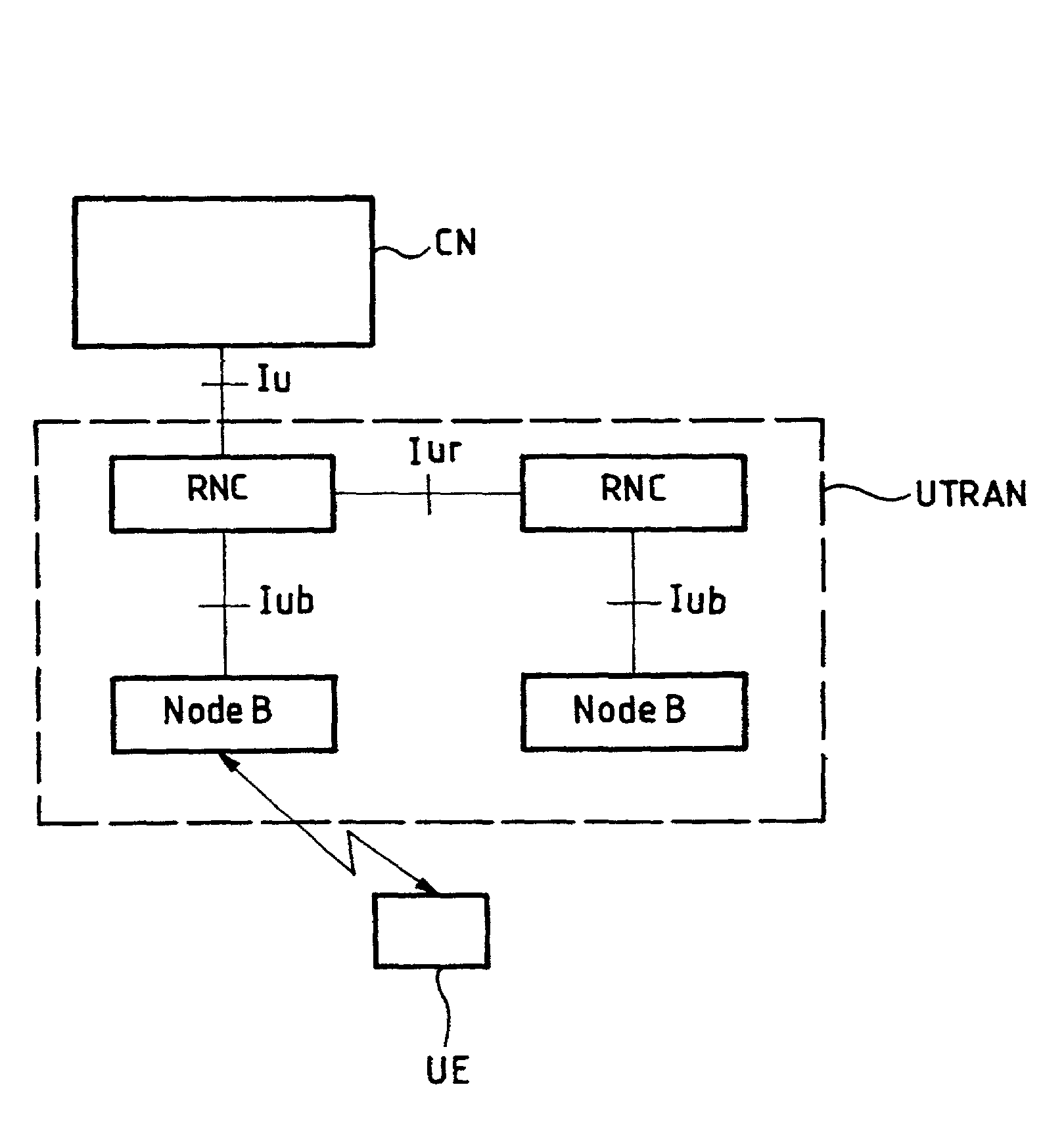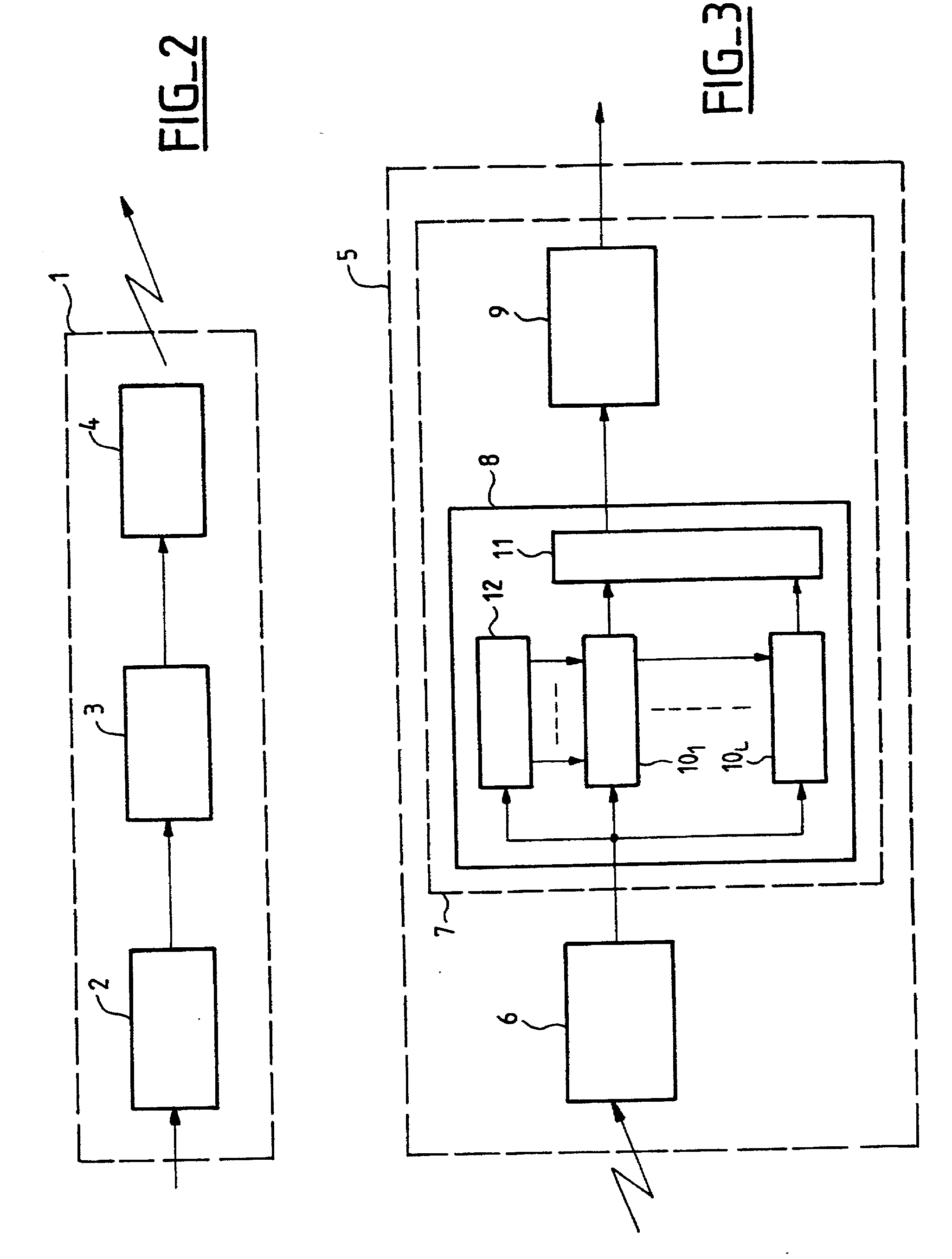Method of managing processing resources in a mobile radio system
a mobile radio and processing resource technology, applied in the field of mobile radio system management, can solve the problems of limited capacity of radio interfaces, unnecessary additional processing in the crnc, and fundamental differences in radio interface capacity limitations from systems using other multiple access techniques
- Summary
- Abstract
- Description
- Claims
- Application Information
AI Technical Summary
Benefits of technology
Problems solved by technology
Method used
Image
Examples
first embodiment
[0162] In a first embodiment the minimum spreading factor has a predetermined value, which is a function of the type of service in particular. For more flexibility, the predetermined value can be adjusted by means such as Operation & Maintenance (O&M) means, for example.
[0163] In this first embodiment, if the SRNC is different from the CRNC, the SRNC can fix the minimum spreading factor which can be signaled to the CRNC at the Iur interface by means of "Radio Link Addition Request" and "Radio Link Set-Up Request" messages, the corresponding information element (IE) being the Minimum UL Channelization Code Length. The CRNC then also signals the minimum spreading factor to the Node B with messages of the same type at the Iub interface.
second embodiment
[0164] In a second embodiment, the minimum spreading factor can be calculated, in particular from a transport format combination set (TFCS) parameter that is usually signaled, employing procedures specified in the corresponding standards, for the dedicated channels (or radio link procedures), or for the common transport channels.
[0165] One feature of the UMTS is the possibility of transporting more than one service on the same connection, i.e. more than one transport channel on the same physical channel. The transport channels (TrCH) are processed separately, in accordance with a channel coding scheme (including error detector coding, error corrector coding, bit rate adaptation and interleaving, as described with reference to FIG. 2) before being time division multiplexed to form a coded composite transport channel (CCTrCH) sent over one or more physical channels. More information on these aspects of the UMTS can be found in the document 3G TS25 212 V3.5.0 published by the 3GPP.
[016...
PUM
 Login to View More
Login to View More Abstract
Description
Claims
Application Information
 Login to View More
Login to View More - R&D
- Intellectual Property
- Life Sciences
- Materials
- Tech Scout
- Unparalleled Data Quality
- Higher Quality Content
- 60% Fewer Hallucinations
Browse by: Latest US Patents, China's latest patents, Technical Efficacy Thesaurus, Application Domain, Technology Topic, Popular Technical Reports.
© 2025 PatSnap. All rights reserved.Legal|Privacy policy|Modern Slavery Act Transparency Statement|Sitemap|About US| Contact US: help@patsnap.com



